Whether scrolling on Instagram between meetings or looking up a YouTube tutorial about how to hang photos, American adults watch online videos like it’s their part-time job.
(We’re talking an average of 19 hours a week in 2022, up one hour from last year and 8.5 hours from 2018). To meet that demand, professional video content creators are more important than ever.
A video content creator can grow their audience by sharing on social media channels and monetizing their work with ads, sponsored content, affiliate marketing, exclusive content, and merchandise.
Here’s a primer on the best platforms for video content and how to become a successful creator.
Table of contents:
- What are video content creators?
- How to become a successful video content creator
- Most popular social media platforms for video creators
- How do video creators make money?
- Best video creation software
- Video content creator FAQ
What are video content creators?
Video content creators produce and share videos, usually on social media channels like YouTube, TikTok, Instagram, LinkedIn, and Twitch. Like marketers and other content creators, they need to be skilled at creating content and figuring out how to reach their target audience, engage with viewers, and monetize their work.
How to become a successful video content creator
1. Choose a niche
A niche is a specific topic or genre you focus on for your content.
You can attract an audience with shared interests by focusing on a specific niche. Choose a niche you’re genuinely passionate about — that’ll make content creation more enjoyable and your content more authentic.
⚡ACTION:
- Research popular content niches.
- Take note of trending topics in areas you're interested in.
- Once you've decided on a niche, dive into it: learn the popular themes, the jargon, influencers, audience expectations, and recent developments. In essence, become part of that audience.
- Try to identify unique angles that you can explore for your content strategy.
2. Know your viewers
Who do you want to attract with your video content?
Knowing your viewers allows you to tailor your content and branding to their tastes and preferences. You can determine what type of content they prefer, how they interact with videos, and even the best time to publish.
⚡ACTION:
- Start by defining who your ideal viewer is. What are their age, interests, and location? What type of content do they consume?
- Use tools like Google Trends and social media analytics to gather data about your target audience.
- Conduct surveys or polls to ask your viewers what they prefer directly.
3. Create a brand
Your brand is what sets you apart from other content creators. It includes your visual style, tone, and message.
Having a unique and consistent brand makes your content immediately recognizable to viewers. A strong brand can also create a sense of community among your viewers, encouraging them to come back and share your content.
⚡ACTION: Develop a clear brand strategy. What values or messages do you want to communicate through your content? How can you visually represent these ideas? Consider creating a distinct visual style, developing catchphrases, or incorporating specific themes into your content.
4. Create high-quality video content
High-quality content is engaging, well-produced, and provides value to the viewer.
Viewers are more likely to watch, share, and return to high-quality content. Quality can refer to both the video production value (such as transitions and sound quality) and the content itself (such as the information or entertainment value it provides).
⚡ACTION:
- Invest in good quality video equipment and editing tools.
- Spend time planning your content: write scripts or outlines, plan shots, and rehearse before filming.
- Continually learn and improve your filming and editing skills.
- Ensure your content provides value by being informative, entertaining, or inspiring.
5. Promote your videos
Promotion involves sharing your videos on various platforms to reach a larger audience. It helps you reach people you wouldn’t have connected with before.
Some common tactics include:
- Optimize your content for SEO. Use tools like Ahrefs or TubeBuddy to find relevant keywords. Incorporate these keywords into your video titles, descriptions, and tags.
- Share your videos on social media platforms, and consider using paid promotions.
- Engage with communities related to your niche on platforms like Reddit or Facebook Groups.
- Collaborate with other content creators for cross-promotion.
💡PRO TIP: Regularly respond to comments on your videos. Host live chats or Q&A sessions. Encourage viewers to like, comment, and share your videos. You could also set up a Discord server or Facebook group for your viewers to interact with each other and you.
Engagement increases viewer loyalty and makes viewers feel more connected to you and your channel. This can lead to higher view counts, longer watch times, and more shares.
6. Monetize your content
You want to get paid as a video creator. You can earn money through ad revenue, sponsorships, merchandise sales, fan funding, or paid subscriptions.
Remember to balance monetization with viewer experience. Too many ads, for example, or too much sponsored content can deter them over time.
⚡ACTION: Research the monetization options available on your platform (such as YouTube's Partner Program). Consider seeking sponsorships relevant to your niche. Set up a Patreon or similar service to allow fans to support you directly.
Most popular social media platforms for video creators
Video has become increasingly integral to the content marketing strategy for many brands.
According to Wyzowl’s Video Marketing Statistics 2023, 91% of businesses use video as a marketing tool.
And for good reason: Compared to other formats, people are twice as likely to share videos with their friends, and when asked how they’d most like to learn about a product or service, 73% said they’d prefer to watch a short video. Here are a few content creator sites where you might consider posting.
YouTube
YouTube is the OG video content platform that brought us early viral videos including the Evolution of Dance (310 million views) and Double Rainbow (nearly 50 million views).
But the Google-owned platform has come a long way. Today, there are more than two billion YouTube users worldwide and 38 million active YouTube channels. Top YouTube creators, like American stunt performer MrBeast, who has around 161 million subscribers at the time of this writing, can earn millions of dollars annually.
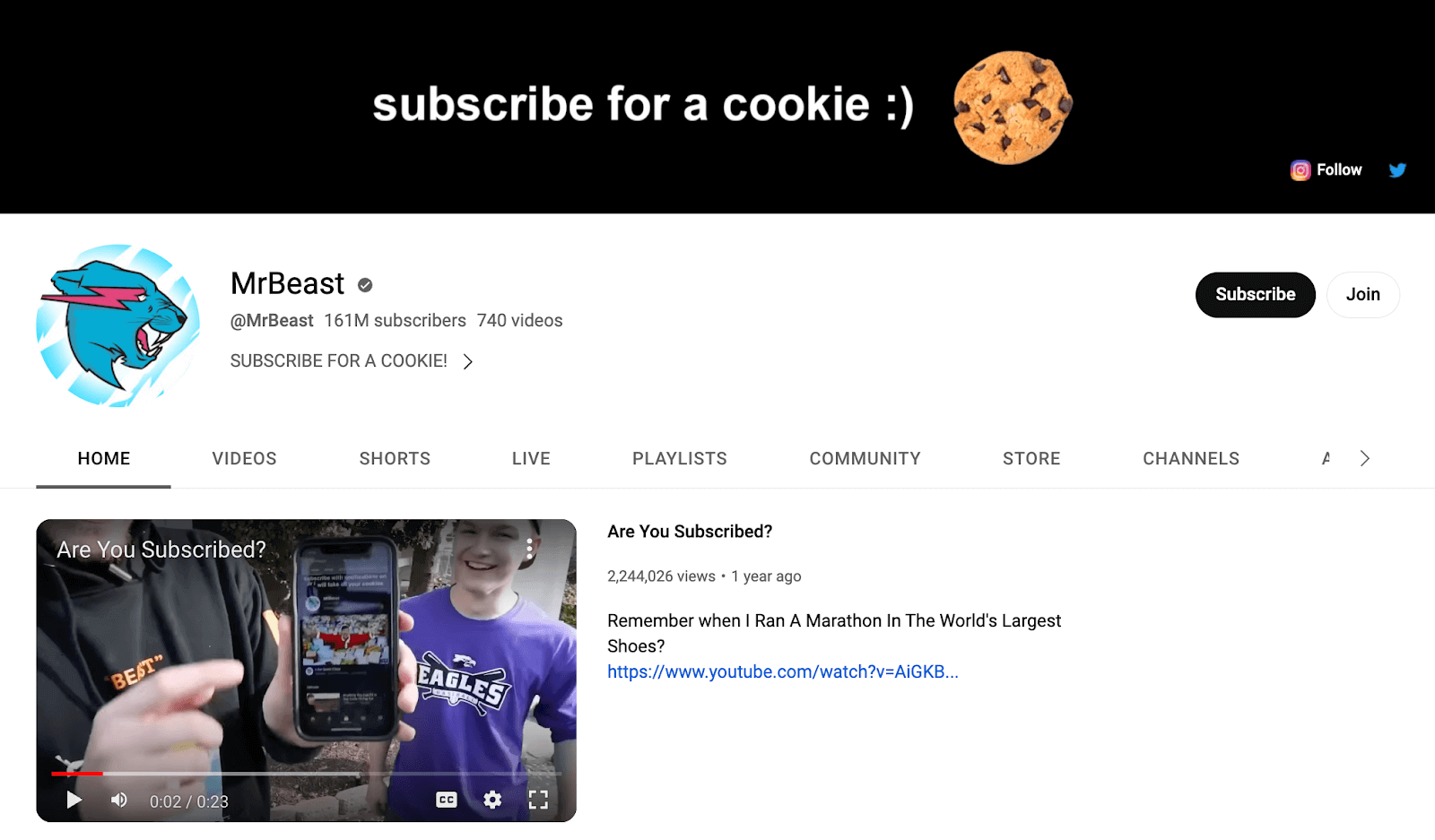 |
But you don’t have to be a content creator with your own Wikipedia page and millions of subscribers to be successful on YouTube. In fact, you only need 1,000 followers and 4,000 watch hours in the past year to apply for YouTube’s Partnership Program and start monetizing your content. Some of the most popular YouTube videos include beauty how-tos, product reviews, music, comedy, ASMR, gaming, tutorials, and all sorts of commentary videos.
TikTok
First launched in China in 2016, TikTok was one of the most downloaded apps from 2020 through 2022, and is still topping the charts in 2023 as well. Unlike on other platforms, TikTok videos are presented vertically and they’re short — initially the length limit was 15 seconds, but it’s gradually been bumped up, most recently to 10 minutes.
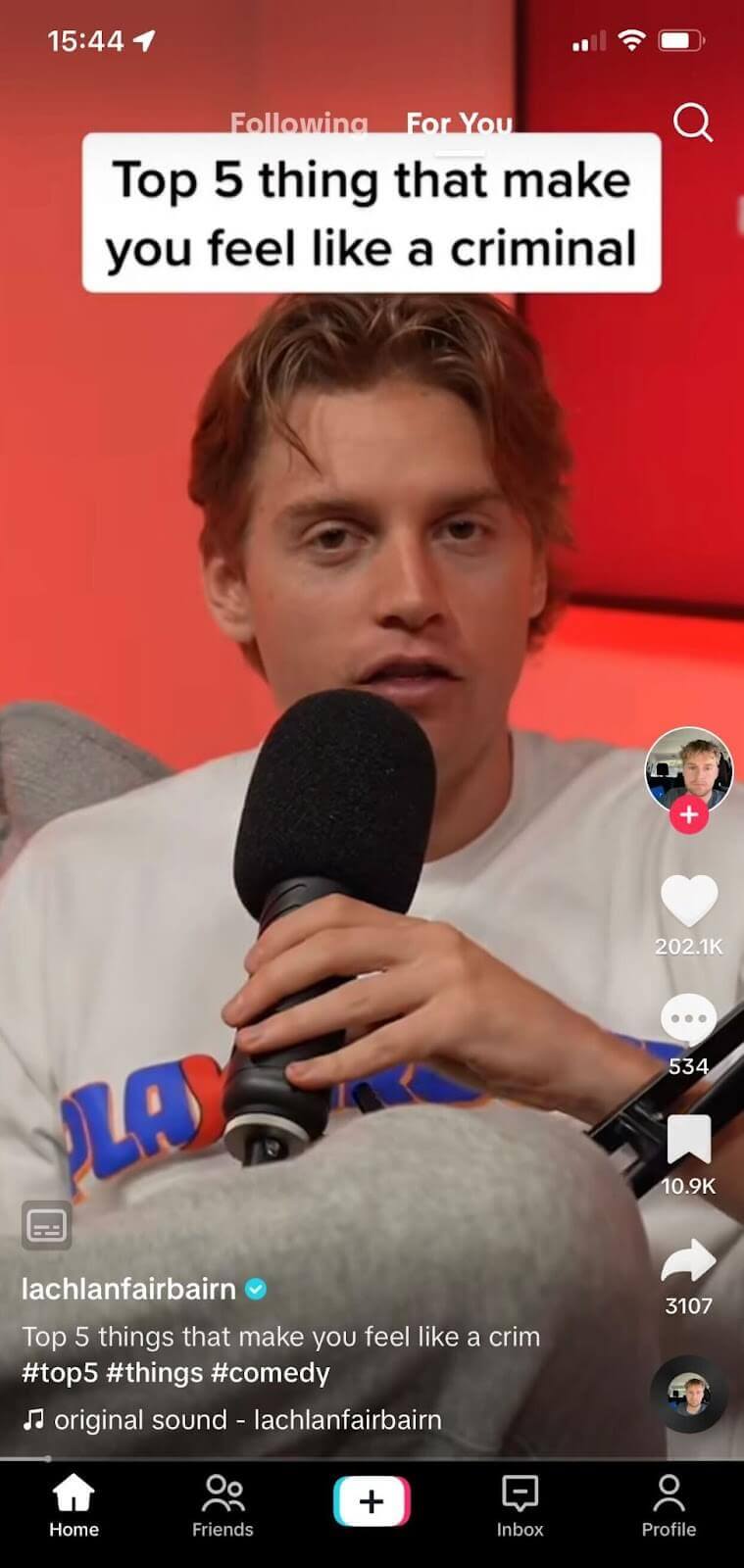 |
The app encourages users to engage with trends by “stitching” or “dueting” existing content. TikTok makes video editing easy with in-app filters and effects. The channel’s audience skews heavily Gen Z, boasts one billion active users, and can be really lucrative. Top creators like dancer Charlie D’Amelio (150 million followers) and lip-synching extraordinaire Addison Rae (88 million followers) earn upwards of $10 million a year.
While Instagram was initially very photo-focused, the Facebook-owned app has really stepped up its video-sharing capabilities in recent years. Many creators don’t even need a professional setup, they record and publish to Instagram from their iOS or Android phones.
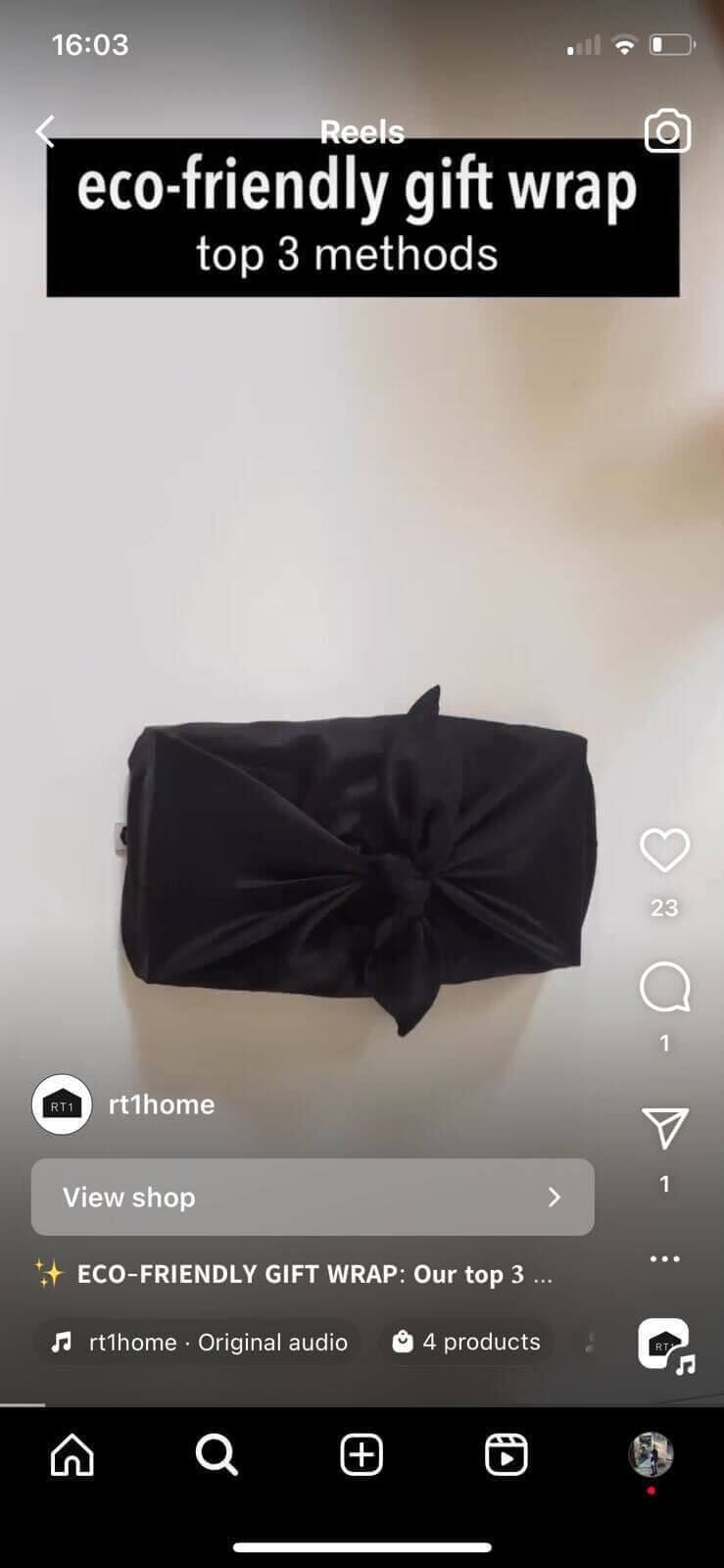 |
Currently, there are a few different ways to post videos to Instagram:
- Posts. In Instagram’s main feed, you can post a video (up to 10 minutes, or 60 minutes for some verified accounts) just like you would a photo.
- Stories. Instagram’s answer to Snapchat, Instagram Stories are photos and videos (up to 15 seconds) that disappear after 24 hours. You can also add polls and quizzes to Instagram stories, as well as include links (which is not possible on the main feed).
- Instagram Live. As its name suggests, Instagram Live allows you to live stream for up to four hours while your audience reacts via comments or emojis.
- Reels. Inspired by TikTok, Instagram added Reels in 2020. These vertical videos, which can be up to 60 seconds long, offer similar capabilities as their competitor, including in-app filters and effects and the option to borrow existing audio from other creators.
Vimeo
Though it was founded one year before YouTube, Vimeo’s audience is much smaller at 170 million active users. But there are still some real benefits to using this platform for online videos.
Designed for artists and content creators, Vimeo is ad-free and supports higher-quality video and audio for paying subscribers. Perhaps the biggest benefit of sharing your content on Vimeo is the community.
 |
Unlike videos on YouTube (which are sometimes flooded with toxic comments), content posted to Vimeo often reaches fellow artists who are more likely to offer constructive and encouraging feedback. If you’re in a creative field (like filmmaking) or are looking for more professional viewers, Vimeo is a great place to reach your target audience.
With nearly three billion monthly active users, Facebook is the world’s largest social media platform. And among U.S. adults who use the site, 70% of them say they log in daily.
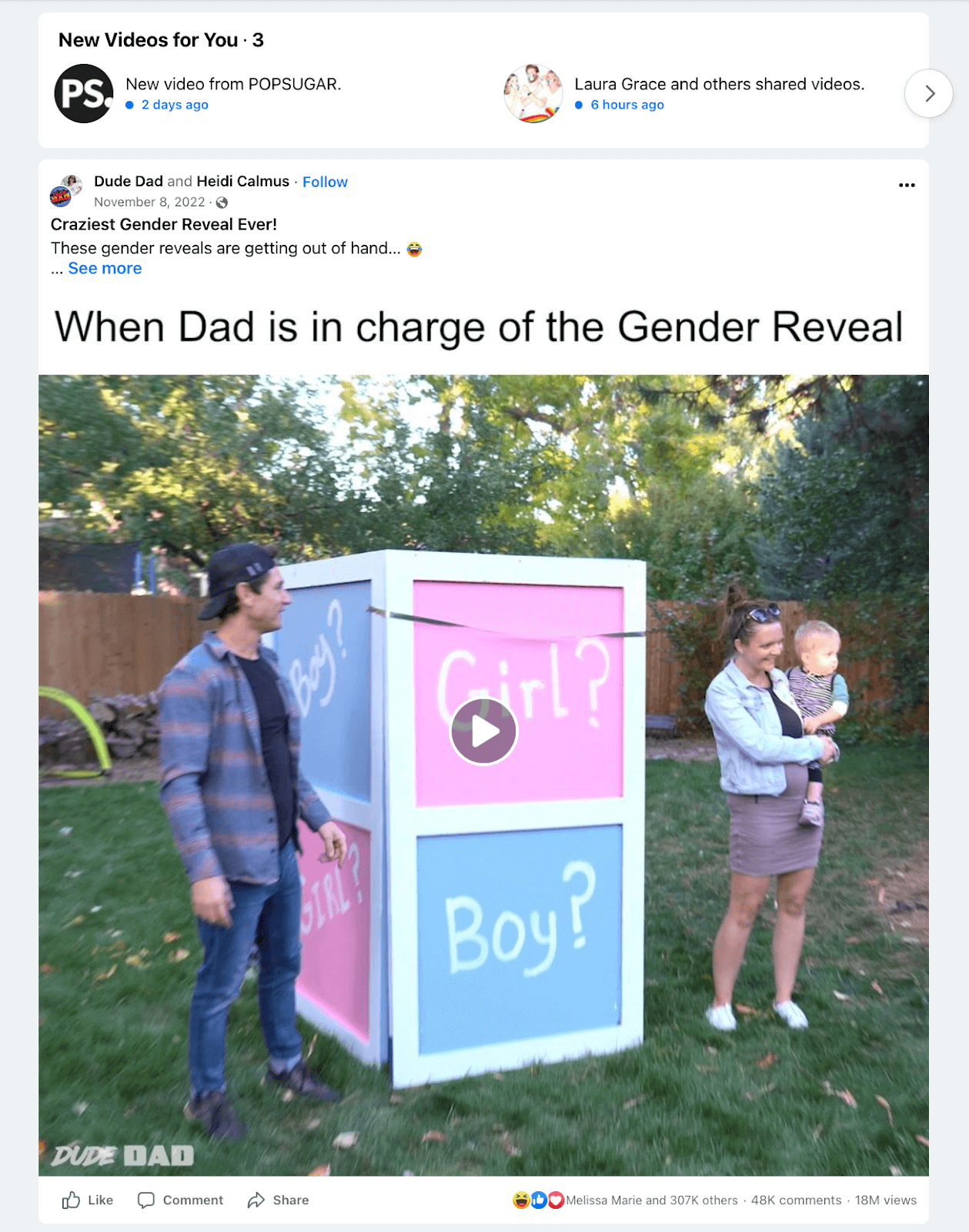 |
While the social network isn’t specifically geared toward video content, Facebook — like Instagram — supports multiple options to create social media videos, including:
- Posts. In Facebook’s main feed, which has been around since the early days of the app, you can share text, links, photos, and videos up to 240 minutes long.
- Stories. Facebook Stories work the same way Instagram and Snapchat stories do. They can be up to 20 seconds long and disappear after 24 hours.
- Facebook Watch. Accessible through Facebook’s main site, Facebook Watch includes original series (similar to Netflix or Amazon Prime, except it’s free), live videos, and content by creators not unlike what you’d find on YouTube.
How do video creators make money?
If you have enough followers, video content creation can be really profitable. Here are a few ways you can monetize your work.
Ads
The most straightforward way to make money off of your video content is to run ads. Sites like YouTube (via the YouTube Partnership program) will place ads before and during your video and compensate you for views.
Sponsored content
Many content creators with a large number of engaged followers partner with brands, featuring the brand’s products on their feed in exchange for payment. For example, multi-platform influencer Amanda Diaz (who has 3.7 million followers on TikTok) shared a video where she recreated a celebrity makeup look using Lancôme products.
Affiliate marketing
Similar to sponsored content, affiliate marketing allows creators to earn money from brands by sharing products with their audience. The difference is that the creator will only be paid if viewers click on or buy the products using an affiliate link.
While this option doesn’t guarantee revenue the same way sponsored content does, it’s accessible to more creators because it doesn’t require a personal relationship with the brand. For instance, anyone can apply to be part of the Amazon Associates program. (Anyone can also apply to be part of the Descript affiliate program, for that matter). If you haven’t worked with brands in the past, this is a good place to start.
Exclusive content
You can also sell exclusive digital content directly to consumers. In most cases, creators have to start by making content for free in order to build an audience. Once you’ve developed a fan base, you can put some of your blog posts, podcast episodes, and videos behind a paywall.
For example, Beleaf In Fatherhood is a parenting blog with nearly one million followers on YouTube, where many videos are available for free, but it also offers weekly exclusive content with a monthly Patreon subscription.
Merchandise
From selling T-shirts and coffee mugs stamped with your brand’s logo to producing a full line of makeup products to correspond with your beauty video blog, offering merchandise to your viewers can be a great way to make money.
Best content creation software
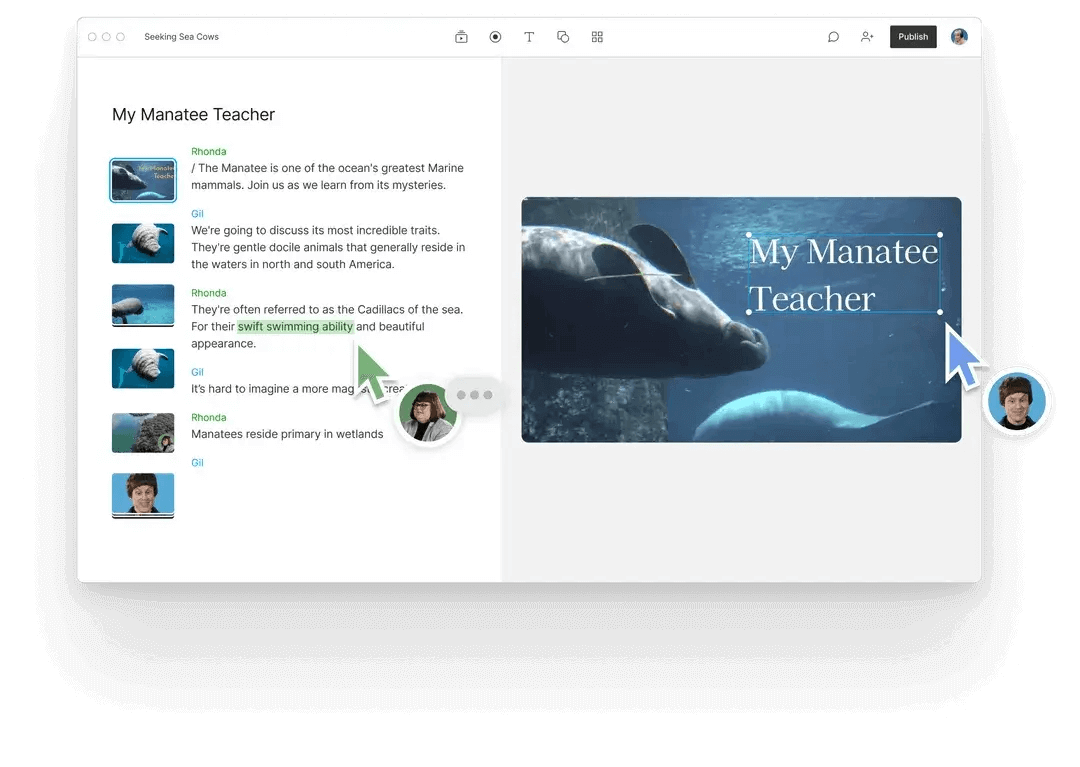 |
- Descript: An AI-powered video editor. Thanks to its powerful automatic transcription features, Descript lets you edit video and audio files in the same way you edit text, making the post-production process easy and intuitive. Beyond editing, Descript’s AI can scan your transcript to find promising highlights for short-form clips, so you can quickly identify share-worthy moments—and then tweak them to match your style.
- Streamlabs: A version of Open Broadcaster Software (OBS) that includes additional features to enhance live streaming, like integrated chat, customizable themes, and a dashboard for monitoring streams.
- Canva: A user-friendly design tool for creating graphics for your videos, like thumbnails, banners, and social media posts. Canva gives you many templates and design elements to create professional-looking graphics, even if you don't have any graphic design experience.
- Tubebuddy/vidIQ: These are YouTube SEO tools that optimize your videos to rank higher in YouTube search results. They can provide insights on keywords, tags, competitors, and more, so you can grow your channel.
- Hootsuite: This social media management tool lets you schedule posts, monitor comments, and analyze metrics across various platforms. It helps you promote your videos and engage with your audience.
Video content creator FAQ
What is a video content creator?
Video content creators create and publish engaging videos, usually for digital platforms such as YouTube, TikTok, Vimeo, or social media. They often create content full-time to entertain or engage an audience, using storytelling techniques and visual effects to create compelling narratives.
What do I need to be a video content creator?
At a minimum, you’ll need a camera or a smartphone, plus a reliable microphone or audio setup, good lighting basics, and editing tools. You’ll also want foundational skills like storytelling and social media know-how. As you grow, consider upgrading your gear to produce higher-quality videos.
What are the 4 types of content creators?
- A blogger writes and publishes articles online.
- A vlogger creates video content for platforms like YouTube or TikTok.
- A podcaster creates audio content for platforms such as Spotify or Apple Podcasts.
- A social media influencer creates content on social media platforms.
What is a content creator vs. an influencer?
Content creators produce and share original content, like blogs, videos, podcasts to engage their audience. Influencers are individuals with substantial followings on social media who can influence their followers' purchasing decisions or opinions.
How do I create video content?
Start by choosing a topic or niche you're passionate about. Plan your video’s purpose and outline key points or a script. Then gather your equipment—such as a camera, microphone, and lighting—and record your footage. Once you have your clips, edit them into a coherent story, add captions or music if needed, and finalize your video for sharing on your chosen platforms.
How do content creators determine their rates for videos?
Rates vary based on several factors, such as the creator’s experience, production costs, and the project’s complexity. Some charge a flat fee, while others use an hourly rate or package deals. Building a portfolio and knowing your audience or client’s needs can guide you in setting a fair price—and as demand grows, you can adjust your rates accordingly.






































